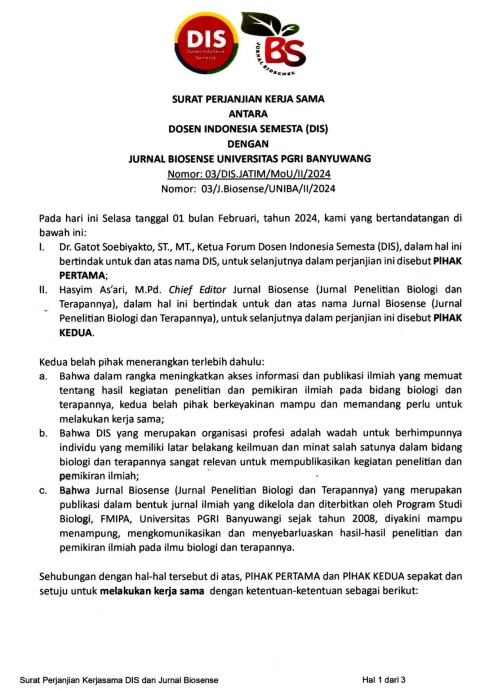PENGARUH EKSTRAK BIJI Ganitri (Elaeocarpus sphaericus Schum.) TERHADAP PERTUMBUHAN BAKTERI Escherichia coli
DOI:
https://doi.org/10.36526/biosense.v2i01.372Abstract
This research was conducted in the laboratory of Biology University PGRI Banyuwangi to determine the effect of ganitri seeds extract (Elaeocarpus sphaericus Schum.) in inhibiting the growth of bacteria Escherichia coli and to determine the Minimum Inhibitory Concentration (MIC) of ganitri seeds extract (Elaeocarpus sphaericus Schum.). The method is using wells with 1% tetracycline positive control and negative control of sterile distilled water. Serial concentrations ganitri seed extract (Elaeocarpus sphaericus Schum.) is used by 10%, 20%, 30%, 40%, and 50%, and in the MIC test using serial concentrations of 1%, 2.5%, 5%, 7.5% and 10%. Based on the test results, the largest inhibition zone is shown by a concentration of 50% with an average diameter of 0,954 cm zone of inhibition and inhibition zone indicated smallest concentration of 10% with an average diameter of 0,215 cm inhibition zone. ANOVA test result value (F.Hit> F.Table) with F.Hit amounted to 33,512 and F.Tabel significance value of 2.85 and 0.000 (P <0.05), as the value of P <0.05 then it can be concluded that there is a concentration of ganitri seeds extract (Elaeocarpus sphaericus Schum.) on the growth of test bacteria. The results of Duncan test showed the ganitri seeds extract (Elaeocarpus sphaericus Schum.) at a concentration of 50% have significantly different inhibatory zone by treatment with 10%, 20%, 30%, 40%, positive control, and negative control. While MIC ganitri seed ethanol extract (Elaeocarpus sphaericus Schum.) Were still able to inhibit the growth of test bacteria at a concentration of 1% with an average diameter of 0.037 cm inhibition zone. The Minimum Inhibitory concentration (MIC) ganitri seed extract (Elaeocarpus sphaericus Schum.) shown by a concentration of 1%, where this concentration is still able to inhibit the growth of bacteria Escherichia coli.
Keyword: Ganitri seed extract, Bacteria Escherichia coli, Serial concentration, Minimum Inhibitory concentration (MIC), Inhibition zone.

















